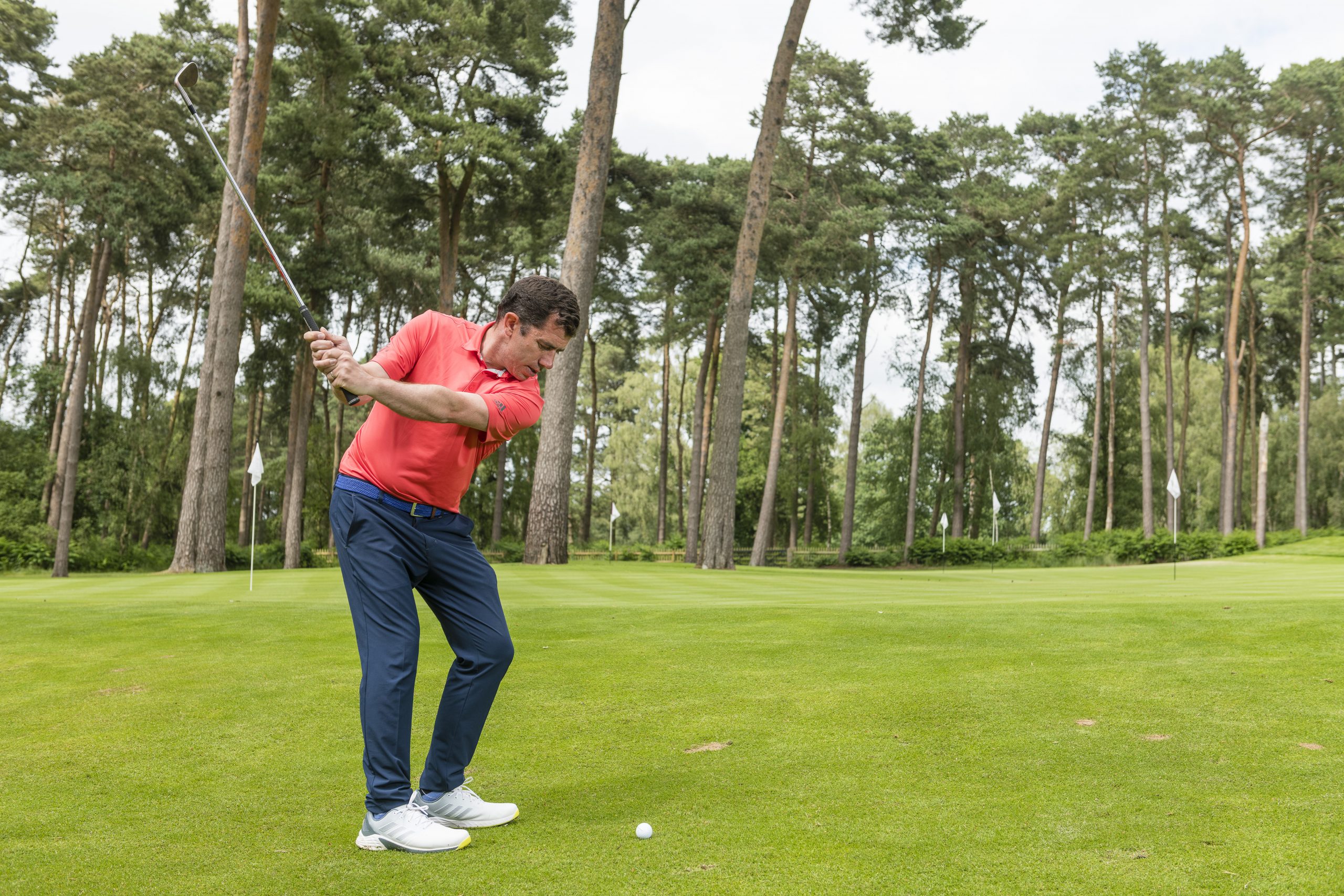Step-By-Step Guide To Pitching - Distance Control
Improve this crucial part of your game with this expert advice from PGA pro Dan Grieve


Golf Monthly created this content as part of a paid partnership with TaylorMade. The contents of this article are entirely independent and solely reflect the editorial opinion of Golf Monthly.
Step-By-Step Guide To Pitching
In this video and article, a step-by-step guide to pitching, Golf Monthly Top 50 Coach Dan Grieve demonstrates how changing your set-up can help you to control your wedge distances.
Distance vs finesse
Distance wedges can be defined as a full wedge shot, where you can make a committed swing and spin the ball more easily. To really be good in this area of the game having the right tools is vital. I'd highly recommend going for a gapping session where you use a launch monitor to make sure the distances between your wedges are nicely staggered - which means you shouldn't have to play so many awkward half and three-quarter length shots.

The tougher part of distance control is when you don’t have the full shot - so you're faced with more of a finesse pitch.
A lot of people struggle with this shot because they don't control the backswing in relation to the distance they're trying to hit the ball. Some golfers have long game bias in their pitching, whereby the stance is too wide and the hands are too far up the grip. This unintentionally causes players to create a backswing that is too long for the shot needed and leads to deceleration or over-hitting.
The address system
To combat this, a lot of golfers like to use the clock face system - which in theory is very good - but it's difficult to execute regularly as it still allows a golfer to overswing and overhit the ball.
Instead, I like to teach the address system. The idea is that you have three different ways of setting up to the ball - 'address one', 'address two' and 'address three', and they create a governor on the backswing that means you can’t overhit; in each address position you’ll feel a natural 'sticky end' to the backswing.
Subscribe to the Golf Monthly newsletter to stay up to date with all the latest tour news, equipment news, reviews, head-to-heads and buyer’s guides from our team of experienced experts.
Watch the video above and what I talk about next is going to make a lot more sense.
Address One
So, using the address one set up for a pitch of about 30 yards, have a distance of one club head between the middle of your feet, have your hands as low as possible on the grip and make sure there is about 60% of your weight on the front foot.

Doing these three things - while also standing a bit closer to the ball because of the position of your hands on the grip - you should feel a natural end point to the backswing where you can then gently rotate through the shot.
Address Two
For a 50-yard pitch, go to address two - so two club heads between the middle of your feet, your hands positioned in the middle of the grip, and stand a little bit further away from the ball, keeping your weight on your left foot. With this set up, you should feel the natural end point of your backswing reach a little higher, allowing for a longer pitch.
Address Three
Your stance needs to be about three club heads wide; get your hands almost to the top of the grip, and stand a little further away from the ball. The natural end point of your backswing should feel longer - but not too long - and allow you to pitch the ball approximately 70 yards.
Watch the step-by-step guide to pitching video to see how I'm using my chest - it's the engine when you pitch and it keeps rotating through.
Golf ball selection
Having the right ball is essential in all areas but particularly around the greens. The TaylorMade TP5 golf ball I'm using in this video has a softer urethane cover than its sibling, the TP5x, making it feel softer off the face and more workable.
It's one of the best TaylorMade golf balls on the market and well worth trying out if you feel like you're missing something in the short game department.

Location: Woburn GC
Dan is one of the leading coaches in the UK, a Fellow of the PGA and a short-game virtuoso. He has had considerable success with a collection of tour pros, helping them to Order of Merit titles and major victories, and his Short Game School is the most attended in the UK. His students, past and present, include Charley Hull, Georgia Hall, Inci Mehmet and Iona Stephen.
Most common problem:
Swing – over the top , help by getting the basics correct at address and making them aware how to get the club online coming down.
Short game – creating spin and feel around the greens, help by educating on what the short game actually is (weak on purpose) and understand bounce and how they can apply it to different lies/situations.
Greatest success story:
Helping Georgia Hall from World No. 450 to No. 6 and winning a Major, two Order of Merits and Solheim Cup appearances.
Greatest teacher:
Alex Hay was a great influence during my first few years at Woburn. In sport more generally Sir Clive Woodward has taught me how to deliver at the highest level.
Most common fault:
Flipped right hand (hands behind the ball). Understand a correct coil/load going back and how to sequence better coming down so the chest opens up and gives the arms space to deliver a stronger impact. Lots of body action drills to enhance the feel, with and without the ball.